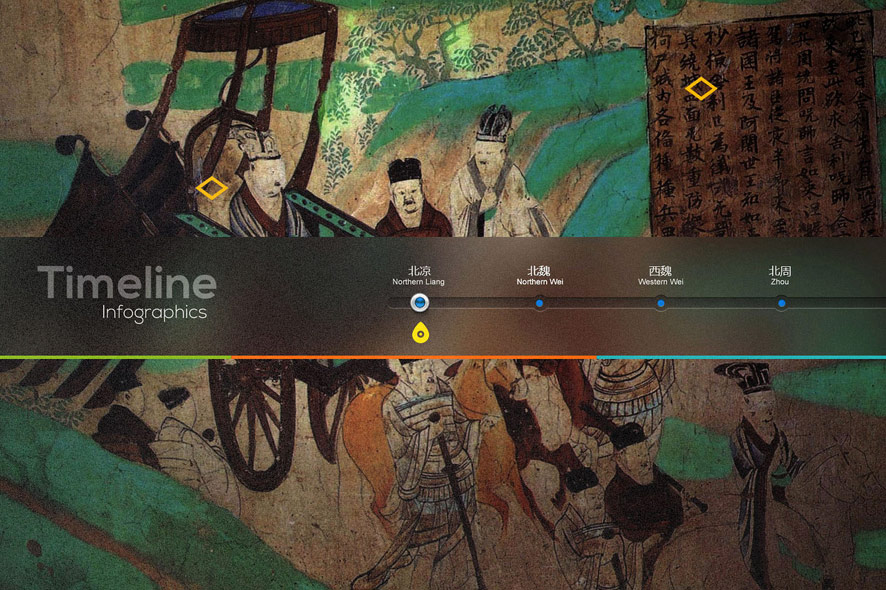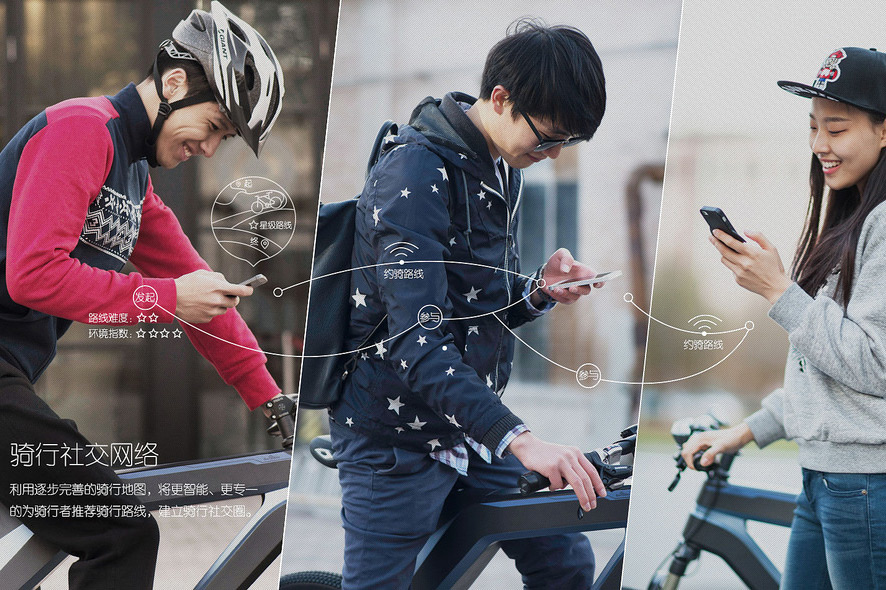Here, inner-city lanes dating back to the Ming Dynasty, the ancient ceramic kilns of Hunan Province, the terracotta army of Emperor Qin Shihuangdi and traditional shadow theater encounter virtual reality, data visualizations, animation and state-of-the-art technology. It’s become a tradition for Linz Art University’s Interface Cultures program to be a major presence at the Ars Electronica Festival—both in the form of an exhibition of works by its own talented students and as host of the Campus exhibition showcasing interesting things happening at an international partner institution. In 2016, this invitation has been extended to Tsinghua University in Peking—to be precise, the Department of Information Art and Design of its Academy of Arts and Design. Tsinghua is one of China’s finest, a member of the prestigious C9 League, an association of the country’s elite institutions of higher learning. In this interview, Prof. Zhigang Wang presents a few of the works in the exhibition, and also discusses his college and its approach to media art.

“Narrow Streets Dating Back to the Ming and Qing Dynasties”, by Wu Shizhong, Guan Yan, Wu Qiong, Wang Zhigang, Zhang Mangmang, Xiang Feng
What were the arguments in favour of establishing the Department of Information Art & Design at the Tsinghua University in 2005?
Zhigang Wang: After the central academy of arts and design was merged into Tsinghua University in 1999, we began to think about the future of design discipline in the integration of information art and technology and that was the point when we saw the opportunity of establishing the Department of Information Art & Design in 2005.
One of your requirements is that the students should have a strong interest in combining art and science. What do you expect from the intersection of these two areas?
Zhigang Wang: We are open to applicants from various disciplines, both science/technology and art/design sides. Our interdisciplinary programs motivate chemical reactions between them. And we expect students graduate with synthetic knowledges and capabilities to be competent for the real world challenges.

“Dunhuang’s Digital Conservation – Virtual Exhibition Platform” by Lu Xiaobo, Wu Qiong, Zhang Lie, Chen Lei et al.
Let’s take a look at your curriculum, starting with your undergraduate studies. What’s essential for Information Design in 2016 in your opinion?
Zhigang Wang: We still focus on design for interactions, the ecologies of products and communications often come together within complex physical and digital environments, so we try to balance making and theory with the integration of new technologies. There will be some projects on “The digital protection on cultural heritage” and “Intelligent product and new media artworks for specific social groups” in 2016.

“InstaBooth” by Fu Zhiyong, Guo Jiajing, Ge Sihang
The graduates of Animation Design will mainly work for the animation and comic industry. What do you think do the companies expect from good animators and how do you prepare the students for these challenges?
Zhigang Wang: The industry, especially the booming Chinese animation industry is always in a shortage of talents that have a wide range of solid skills. In this case a sound show reel or portfolio is crucial for every graduate and that is literally our core of teaching. Besides, a more ambitious goal is to enable our animation students to succeed in other related fields with their animation training and thinking without necessarily working as animators or directors. Unlike traditional animation courses, the students are exposed to a wider spectrum of art and design and encouraged to relate their art works to multiple aspects of the society.

The Photography Lab at the Tsinghua University. Credit: Tsinghua University
At your department you are also focusing on photography. Could you tell us a little bit more about that?
Zhigang Wang: In this program, we develop the aesthetic, technical, conceptual, and professional skills needed to establish a successful creative practice. Our students explore analogue and digital platforms and photography’s intersections with video, installation, and multimedia art.
“Artists and designers today face two fundamental challenges: the expanding influence of design within society and the increasing role of technology within design. The photography program provides a dynamic, challenging, and idea-driven environment in which to address these challenges. Students can work with peers in related programs including film, electrical technology, biology, sociology, anthropology in contemporary issue.”
A student-centred curriculum allows for both focused and interdisciplinary learning to master concepts, technologies, and research methods that cut across a wide array of fields. By synthesizing theory with craft, and combining art and design studies with the liberal arts and technology, photography department prepares its students to shape scholarship in their field and make art and design that matters. Its faculty of notable artists, engineer, scientist, design practitioners, critics, historians, writers, and scholars exemplifies an extraordinary breadth of vision. They challenge convention by encouraging experimentation, nurturing alternative worldviews, and joining theory with practice in sophisticated and innovative ways. Outside the classroom, students have access to unparalleled internship opportunities and industry partnerships, which open up many possibilities for entrepreneurship and professional success.

DuBike, a smart bicycle by Wang Chao, Xu Yingqing, Su Yi, Tao Ji, Wang Meng, Sun Zhuang, Huang Xiangyang, Fang Ke, Wang Yu, Gu Jiawei, Yan Suosuo, Zhang Lei, Mi Haipeng, Yu Kai
“Digital Entertainment Design” is another bachelor programme you are offering. What do the students learn in this field?
Zhigang Wang: ”Digital Entertainment Design” is a second degree programme for non-design background Tsinghua students. Students from a wide range of disciplines study on game design and interactive media theories, and learn the skills as a team to plan, design and implement for PC or mobile games, interactive media products and installations.

“Feather” by Gong Ziyi
How do the students work in the field of “New Media Art” and in cross-disciplinary postgraduate projects? And how do you at the department define new media art in general?
Zhigang Wang: In our programs, students are exposed to the cutting age developments of technologies and art. We encourage students with diverse backgrounds to work together, and realize ideas via interdisciplinary perspectives and solutions. We don’t intentionally follow the trend of new media art in contemporary art context, but we take advantage of its spirit to stimulate innovation combining science and art.

Prof. Zhigang Wang, PHD of Fine Arts,is Vice Director and Associate Professor at the Department of Information Arts & Design, that belongs to the Academy of Art & Design at the Tsinghua University. Apart from his role as Creative Director at the Beijing E-GO Computer Graphic Studio he is also Vice Director of the New Media Arts committee of the Stage Art Institute of China. His academic achievements are mainly research and creations of cross-boundary animation art.
The Campus exhibition running at Linz Art University during the 2016 Ars Electronica Festival is open from Thursday to Sunday, September 8-11 from 11 AM to 9 PM, and on Monday, September 12 from 11 AM to 7 PM. An overview of the exhibits is online at ars.electronica.art/radicalatoms.
